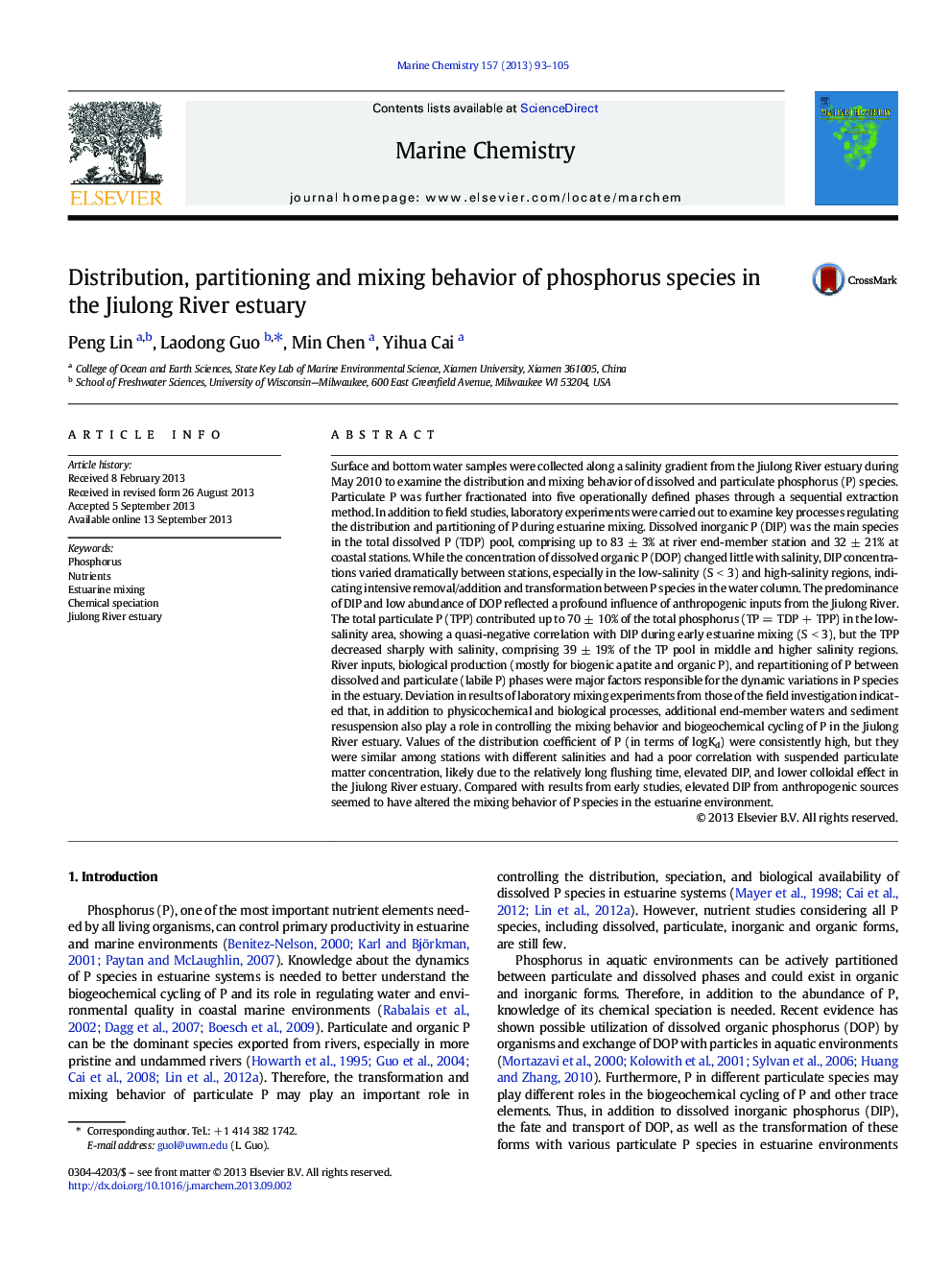| کد مقاله | کد نشریه | سال انتشار | مقاله انگلیسی | نسخه تمام متن |
|---|---|---|---|---|
| 1263000 | 1496678 | 2013 | 13 صفحه PDF | دانلود رایگان |

• Chemical speciation and mixing behavior of P were studied in Jiulong River estuary.
• A dynamic transformation among different P species was observed during estuarine mixing.
• Increasing DIP inputs seem to alter the mixing behavior of P species in the estuary.
Surface and bottom water samples were collected along a salinity gradient from the Jiulong River estuary during May 2010 to examine the distribution and mixing behavior of dissolved and particulate phosphorus (P) species. Particulate P was further fractionated into five operationally defined phases through a sequential extraction method. In addition to field studies, laboratory experiments were carried out to examine key processes regulating the distribution and partitioning of P during estuarine mixing. Dissolved inorganic P (DIP) was the main species in the total dissolved P (TDP) pool, comprising up to 83 ± 3% at river end-member station and 32 ± 21% at coastal stations. While the concentration of dissolved organic P (DOP) changed little with salinity, DIP concentrations varied dramatically between stations, especially in the low-salinity (S < 3) and high-salinity regions, indicating intensive removal/addition and transformation between P species in the water column. The predominance of DIP and low abundance of DOP reflected a profound influence of anthropogenic inputs from the Jiulong River. The total particulate P (TPP) contributed up to 70 ± 10% of the total phosphorus (TP = TDP + TPP) in the low-salinity area, showing a quasi-negative correlation with DIP during early estuarine mixing (S < 3), but the TPP decreased sharply with salinity, comprising 39 ± 19% of the TP pool in middle and higher salinity regions. River inputs, biological production (mostly for biogenic apatite and organic P), and repartitioning of P between dissolved and particulate (labile P) phases were major factors responsible for the dynamic variations in P species in the estuary. Deviation in results of laboratory mixing experiments from those of the field investigation indicated that, in addition to physicochemical and biological processes, additional end-member waters and sediment resuspension also play a role in controlling the mixing behavior and biogeochemical cycling of P in the Jiulong River estuary. Values of the distribution coefficient of P (in terms of logKd) were consistently high, but they were similar among stations with different salinities and had a poor correlation with suspended particulate matter concentration, likely due to the relatively long flushing time, elevated DIP, and lower colloidal effect in the Jiulong River estuary. Compared with results from early studies, elevated DIP from anthropogenic sources seemed to have altered the mixing behavior of P species in the estuarine environment.
Journal: Marine Chemistry - Volume 157, 20 December 2013, Pages 93–105